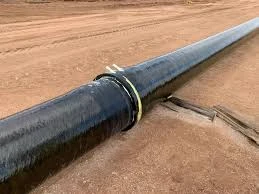
-
 Afrikaans
Afrikaans -
 Albanian
Albanian -
 Amharic
Amharic -
 Arabic
Arabic -
 Armenian
Armenian -
 Azerbaijani
Azerbaijani -
 Basque
Basque -
 Belarusian
Belarusian -
 Bengali
Bengali -
 Bosnian
Bosnian -
 Bulgarian
Bulgarian -
 Catalan
Catalan -
 Cebuano
Cebuano -
 China
China -
 China (Taiwan)
China (Taiwan) -
 Corsican
Corsican -
 Croatian
Croatian -
 Czech
Czech -
 Danish
Danish -
 Dutch
Dutch -
 English
English -
 Esperanto
Esperanto -
 Estonian
Estonian -
 Finnish
Finnish -
 French
French -
 Frisian
Frisian -
 Galician
Galician -
 Georgian
Georgian -
 German
German -
 Greek
Greek -
 Gujarati
Gujarati -
 Haitian Creole
Haitian Creole -
 hausa
hausa -
 hawaiian
hawaiian -
 Hebrew
Hebrew -
 Hindi
Hindi -
 Miao
Miao -
 Hungarian
Hungarian -
 Icelandic
Icelandic -
 igbo
igbo -
 Indonesian
Indonesian -
 irish
irish -
 Italian
Italian -
 Japanese
Japanese -
 Javanese
Javanese -
 Kannada
Kannada -
 kazakh
kazakh -
 Khmer
Khmer -
 Rwandese
Rwandese -
 Korean
Korean -
 Kurdish
Kurdish -
 Kyrgyz
Kyrgyz -
 Lao
Lao -
 Latin
Latin -
 Latvian
Latvian -
 Lithuanian
Lithuanian -
 Luxembourgish
Luxembourgish -
 Macedonian
Macedonian -
 Malgashi
Malgashi -
 Malay
Malay -
 Malayalam
Malayalam -
 Maltese
Maltese -
 Maori
Maori -
 Marathi
Marathi -
 Mongolian
Mongolian -
 Myanmar
Myanmar -
 Nepali
Nepali -
 Norwegian
Norwegian -
 Norwegian
Norwegian -
 Occitan
Occitan -
 Pashto
Pashto -
 Persian
Persian -
 Polish
Polish -
 Portuguese
Portuguese -
 Punjabi
Punjabi -
 Romanian
Romanian -
 Russian
Russian -
 Samoan
Samoan -
 Scottish Gaelic
Scottish Gaelic -
 Serbian
Serbian -
 Sesotho
Sesotho -
 Shona
Shona -
 Sindhi
Sindhi -
 Sinhala
Sinhala -
 Slovak
Slovak -
 Slovenian
Slovenian -
 Somali
Somali -
 Spanish
Spanish -
 Sundanese
Sundanese -
 Swahili
Swahili -
 Swedish
Swedish -
 Tagalog
Tagalog -
 Tajik
Tajik -
 Tamil
Tamil -
 Tatar
Tatar -
 Telugu
Telugu -
 Thai
Thai -
 Turkish
Turkish -
 Turkmen
Turkmen -
 Ukrainian
Ukrainian -
 Urdu
Urdu -
 Uighur
Uighur -
 Uzbek
Uzbek -
 Vietnamese
Vietnamese -
 Welsh
Welsh -
 Bantu
Bantu -
 Yiddish
Yiddish -
 Yoruba
Yoruba -
 Zulu
Zulu
Exploring the Advantages and Applications of FRP Panels in Modern Construction and Design
Exploring the Benefits of FRP Panels A Modern Solution for Construction and Design
Fiberglass Reinforced Plastic (FRP) panels have emerged as a versatile and innovative solution in various industries, including construction, transportation, and manufacturing. These composite materials combine the durability of fiberglass with the robustness of plastic, resulting in products that are lightweight, strong, and resistant to environmental factors. In this article, we will delve into the benefits of FRP panels, highlighting their applications and advantages.
Durability and Strength
One of the primary reasons for the popularity of FRP panels is their exceptional durability. Made from a combination of fiberglass and thermosetting resin, these panels are incredibly strong and can withstand significant stress without deforming or breaking. This strength makes them an ideal choice for areas subject to heavy loads and impacts, such as factory floors, bridges, and industrial facilities. Furthermore, FRP panels are resistant to corrosion, which is particularly beneficial in environments where moisture or chemicals are present. Unlike traditional materials such as wood or metal, FRP does not rot or rust, thus ensuring a longer lifespan with minimal maintenance.
Lightweight Nature
Another significant advantage of FRP panels is their lightweight nature. Compared to traditional construction materials, FRP is much lighter, making it easier and more cost-effective to transport and install. This lightweight quality can lead to reduced labor costs and faster construction times, as fewer resources are needed for handling and installation. Additionally, the reduced weight can contribute to more efficient structural designs, as less reinforcement is required for the overall support of a building or structure.
Thermal Insulation and Energy Efficiency
frp panel

FRP panels offer excellent thermal insulation properties, making them an energy-efficient choice for buildings and facilities. By minimizing heat transfer, they help maintain stable indoor temperatures, which can lead to significant savings on heating and cooling costs. This energy efficiency not only benefits the occupants' comfort but also contributes to a lower carbon footprint, aligning with sustainable construction practices that many companies and organizations are striving to achieve.
Versatility and Design Flexibility
The versatility of FRP panels is another noteworthy benefit. Available in various shapes, sizes, and colors, they can be customized to fit specific design requirements. Whether for aesthetic purposes or functional needs, FRP panels can suit diverse architectural styles. Their ease of fabrication allows for unique designs that traditional materials might not accommodate. This design flexibility has made them popular in applications ranging from commercial buildings to residential projects.
Resistance to Environmental Factors
FRP panels excel when it comes to resistance against a variety of environmental factors. They can withstand harsh weather conditions, including UV radiation, extreme temperatures, and moisture. This resistance not only extends the panels' lifespan but also keeps them looking new for longer periods. As a result, FRP panels are widely used in outdoor applications, such as signage, canopies, and exterior cladding.
Conclusion
In summary, FRP panels represent a modern solution to many of the challenges faced in construction and design. Their durability, lightweight nature, thermal insulation properties, versatility, and resistance to environmental factors make them an ideal choice for numerous applications. As industries continue to seek materials that are not only effective but also sustainable, FRP panels will likely play an increasingly prominent role in shaping the future of construction and design. Whether for a new building project or a renovation, the incorporation of FRP panels is a step toward innovation and efficiency in modern architecture.
Latest news
-
High-Quality Fiberglass Car Bodies Durable GRP Car & Boat Body SolutionsNewsJul.08,2025
-
High-Quality Fiberglass Dual Lamination Product Manufacturer Durable FRP & GRP Dual Lamination SolutionsNewsJul.08,2025
-
Rectangular Tank with Dimensions for GRP Calculation Custom Fiberglass GRP Rectangular TanksNewsJul.07,2025
-
High-Quality Fiberglass Weir Custom FRP Weir & Fiberglass Tanks ManufacturerNewsJul.07,2025
-
CPVC FRP Pipe A Reliable Choice for Industrial Applications High Strength & Corrosion ResistanceNewsJul.07,2025
-
Fiberglass Scrubber for Effective Cleaning and Stain Removal – Superior Performance in Various ApplicationsNewsJul.06,2025









